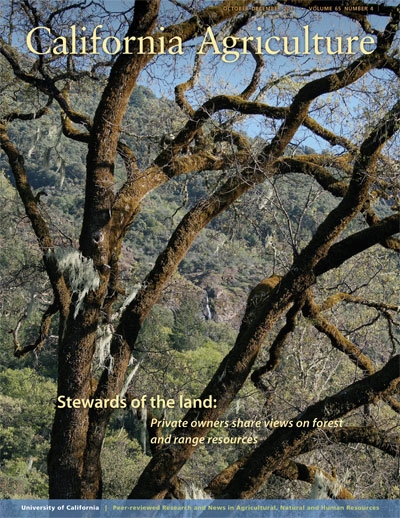
Cultivated on 1.1 million acres, alfalfa is the largest consumer of water among all crops in California, accounting for up to 27 percent of the state’s irrigation water use. Alfalfa is usually flood irrigated, often leading to overirrigation. Water is pumped in at the top of field rows and flows down to the end. If the flow is not turned off before it reaches the bottom, substantial runoff occurs.
The new system employs sensors to track the advance of water down a field, a model that predicts when water will reach the tail end of the field, and a cellular communications system that sends a cell phone alert to the irrigator to turn off the water. It was field-tested during two seasons on the UC Davis campus; the results — zero tail water drainage from the trial fields compared with thousands of liters of runoff from control fields — are reported in the October–December 2011 issue of the University of California’s California Agriculture journal.
“Under current practice, the alfalfa irrigator makes several trips to the field to determine when the wetting front has reached a certain distance from the bottom end of the check [irrigation channel] before turning off the irrigation,” writes lead author Rajat Saha, assistant engineer for MBK Engineers in Sacramento. “Even making several trips, the irrigator may miss the wetting front advance, which results in excessive tail water drainage.”
The system, developed by Saha and coauthors at UC Davis while Saha was a UC Davis graduate student, was successfully demonstrated to dozens of farmers last year at the Alfalfa Field Day. The components are relatively inexpensive: the sensors (three per check) cost about $25 each; the data logger and modem, which can be easily moved from one location to another to reduce the initial installation investment, about $500 and $200, respectively.
If the new system, which may be commercially available in early 2012, were used for the typical five irrigations per alfalfa season, “water savings could be about 35,000 to 60,000 liters per acre,” Saha reports.
The research article, and the entire October–December 2011 issue, can be downloaded at http://californiaagriculture.ucanr.org.
California Agriculture is the University of California’s peer-reviewed journal of research in agricultural, human and natural resources. For a free subscription, go to: http://californiaagriculture.ucanr.org, or write to calag@ucdavis.edu.
WRITERS/EDITORS: To request a hard copy of the journal, email crllopez@ucdavis.edu.